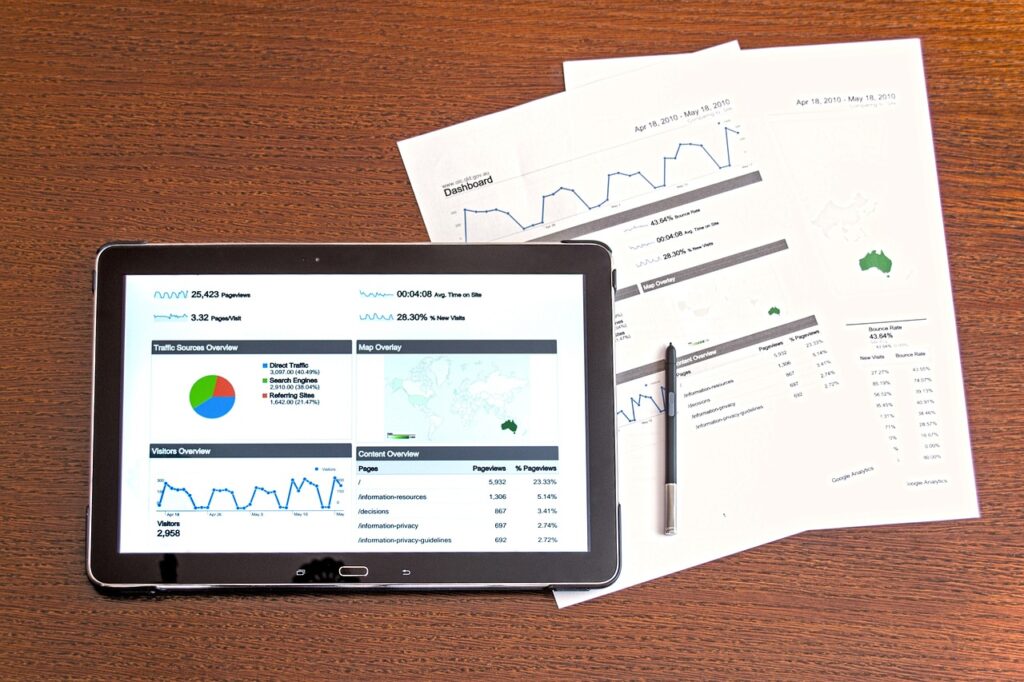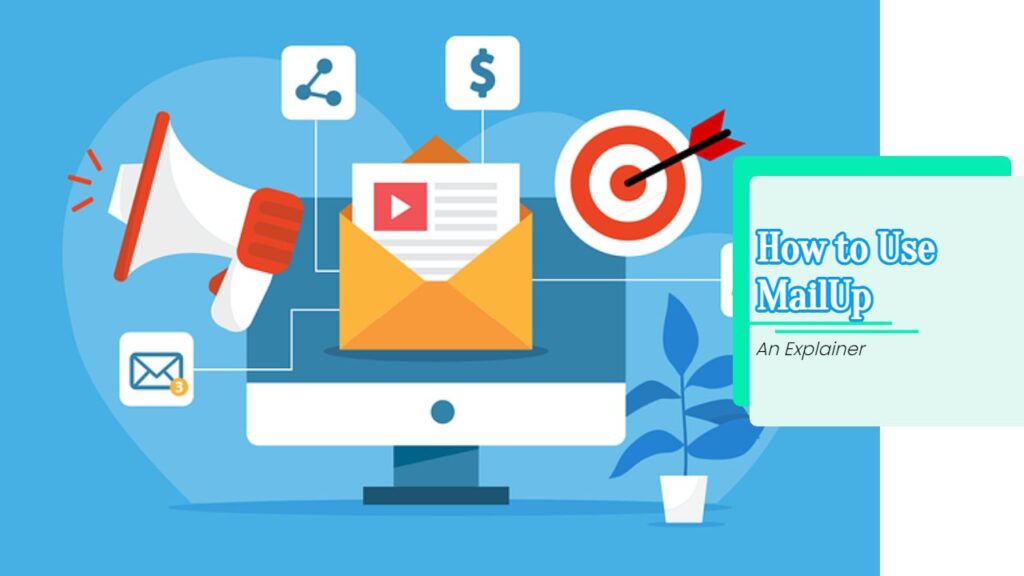Defining the Folks You Want to Sell To
Grasping the Idea
When we talk about a target audience, imagine a crowd of folks your business wants to connect with. This bunch is handpicked based on things like age, interests, and how they tick. They’re your prime candidates, your kindred spirits who’ll dig what you’re offering. Think of these personas as your business’s BFFs—the people who are most likely to head to the checkout with a full cart, all excited. Nail this down, and your biz can chat with potential customers in a way that hits home.
Why It’s a Big Deal in Marketing
Spotting your perfect crowd isn’t just important, it’s huge. It’s like having X-ray vision that lets you see who’s itching to buy your stuff. Get to know these peeps, and your marketing magic will feel more like an exclusive chat than a sales pitch. It’s all about making each person feel like they’re the VIP in the room—and that helps lock in those sales.
When you really understand your crowd, you can whip up a pitch that’s pretty much irresistible. This winning vibe needs to show what makes you special, specifically catering to what these folks desire most. Get it right and you’ll see more clicks, likes, and shares. Plus, you get happier, loyal customers who keep coming back because they know you “get” them.
| Key Ideas | Description |
|---|---|
| Get Personal | Shoppers love it when they feel like the brand’s speaking directly to them. |
| Your Special Sauce | Highlight what you offer that’s perfect for these folks. |
| Persona Party | Break the crowd down into smaller groups to tailor your messages even more. |
Wrapping your head around who you’re talking to means you, whether you’re a CEO or a marketing whiz, can steer your strategies right where they need to go. Want more know-how on sizing up and understanding audiences? Check out target audience analysis and understanding your target audience for loads of insights.
Demographics Analysis
So, you’re trying to crack the code of effective marketing, huh? Well, buckle up – understanding who’s buying your stuff is no small potatoes. Here, demographics come into play, helping you paint a picture of your ideal customer. We’re talking about age, gender, where they’re living, what they do for a living, and how much dough they’re bringing home. These tidbits are golden when you’re trying to make your marketing hit the bullseye.
Age, Gender, and Location Insights
Let’s switch gears to age, gender, and where your folks are hanging out, quite literally. These aren’t just random metrics. Nope, they’re game-changers in figuring out how people tick and the type of ads that’ll make them stop scrolling. What’s cool is how you can tweak what you’re putting out there based on who’s watching. Teens might be all about TikToks and Snaps, while your Aunt Sally might still be getting her news from the evening broadcast.
Check out this cheat sheet on how age and gender get the say on marketing moves:
| Age Group | Gender | Preferred Channels |
|---|---|---|
| 18-24 | Female | Instagram, TikTok |
| 18-24 | Male | Snapchat, YouTube |
| 25-34 | Female | Facebook, Instagram |
| 25-34 | Male | Twitter, YouTube |
| 35-44 | Female | Facebook, Email Newsletters |
| 35-44 | Male | LinkedIn, Facebook |
| 45+ | Female | Email Newsletters, TV |
| 45+ | Male | TV, Radio |
And don’t sleep on location, either. Whether it’s the deep south or up north, everyone has their quirks and preferences. Tools like target audience analysis tools can help you sniff out regional tastes.
Occupation and Income Level Consideration
Now, let’s talk about jobs and the moolah. If you know what people do and how much they earn, you’re already one step ahead in the marketing game. This is like knowing what flavor of ice cream someone likes – you just whip up a treat they can’t refuse.
Here’s the rub:
| Occupation | Income Level | Marketing Approach |
|---|---|---|
| Students | Low | Affordable products, discounts |
| Entry-level Careers | Moderate | Budget-friendly options |
| Mid-level Careers | High | Premium products and experiences |
| Executives | Very High | Exclusive services, luxury branding |
Hey, and don’t forget those consumer behavior deep dives. Things like buying patterns tell you a lot about why folks pick product A over product B. Use some kick-butt platforms like HubSpot Analytics and Facebook Insights to gather your data in one clean sweep. That way, you’re sharpening your game-plan to hit the right notes with the right folks.
All of this demographic digging ain’t just busy work. It’s getting down to the nitty-gritty of who you’re connecting with and why they should choose you. Looking to dive deeper? Check out our guide on defining your target audience and learn tips on target audience segmentation strategies.
Psychographics Evaluation
Figuring out what makes customers tick goes beyond just knowing their age or where they live. That’s where psychographics come in, helping us peek into the emotional and social cues that steer people towards a buying decision. By digging into beliefs, values, interests, lifestyles, and behaviors, we get a sneak peek into what drives folks to reach for their wallets.
Spending Behavior and Values
If you want to grab your audience’s attention, you better first understand how they like to spend their cash. Whether they’re counting pennies, willing to shell out for the best, sticking by a brand like their favorite baseball team, or acting on impulse, knowing these quirks can fine-tune your message to fit like a glove.
| Spending Behavior | Description |
|---|---|
| Price-Sensitive | Always on the hunt for bargains and discounts. |
| Quality-Focused | Prefers to pay extra for top-tier products. |
| Brand-Loyal | Sticks with their go-to brands no matter what. |
| Impulsive | Goes with the flow, buying stuff on a whim. |
As Emplifi points out, what people believe in heavily sways what they buy. Get in tune with their values, and you’ve got yourself a ticket to crafting marketing magic that sticks.
Interests and Pain Points
Figuring out the hobbies, interests, and bugbears of your audience is next on the list. Whether they’re into yoga, gadget hunting, or bemoaning the lack of local organic veggies, these insights are goldmines for aligning your messages with what they care about or struggle with.
| Interest Category | Examples |
|---|---|
| Lifestyle | Into fitness, globe-trotting, or the latest tech trends. |
| Hobbies | Gotta-love reading, sports, tinkering with crafts. |
| Consumer Preferences | All about eco-friendly goodies, supporting local, or scoring exclusive deals. |
Tapping into what annoys them can thrust your product into the limelight as the knight in shining armor. Nora Sudduth reminds us that what gets them jazzed is how your offer makes their life easier, not the product specs. Tie your promotions to what they really want, and they’re yours.
Mix together how they spend, what they value, love, and find annoying, and you’ll cook up buyer personas that hit the mark. With these profiles on hand, your advertising can fire on all cylinders, speaking directly to the right folks. For more tips on crafting these personas, swing by our target audience profiling page.
Market Research Techniques
Connecting with your audience can be a game of hide and seek—minus the hiding, of course. To really nail it, dive into some handy research tricks. Let’s break down some nifty ways to get to know the folks you’re reaching out to, focusing on how to analyze your audience and what social media tells you about them.
Audience Analysis Methods
Getting a grip on who you’re marketing to? It’s all about putting together a puzzle where knowing age, thinking patterns, and shopping habits are your pieces. Here’s a quick look at some puzzle parts to keep an eye on:
| Analysis Area | What’s It All About? |
|---|---|
| Demographics | Think age, gender, where they live, and what they earn. It’s your basic “who are they” kit. |
| Psychographics | Values, beliefs, lifestyle choices—basically what makes ’em tick. |
| Buying Behavior | How often they whip out their wallets and their go-to shopping spots. |
These insights are your treasure map to understanding what makes your audience click (Asana’s guide). Dive into surveys, gather friends for focus groups, or just have a chat to collect gold nuggets of information about your target crowd.
Social Media Demographics Study
Social media: where likes, shares, and hashtags are the currency for figuring out what your audience is into. Keep an eye out for patterns and preferences by peeking at who’s hanging out on which platform. Here’s a cheat sheet for you:
| Social Media Hangout | Who’s There? |
|---|---|
| Everyone and their grandma, especially 25-34-year-olds. | |
| The cool kids—millennials and Gen Z peeps, mostly 18-29. | |
| The suit-and-tie crew, ages 30-49 are here to network. | |
| TikTok | Your little sibling’s hangout spot, mainly for those 16-24. |
Want to keep your audience engaged? Throw in some polls, chuck in a survey, or mix it up with interactive stuff (HubSpot’s tips). These tactics can uncover what really bugs your audience, what excites them, and, importantly, where they shop, so you can tailor your marketing mojo spot-on.
Mixing up your audience analysis with social media sleuthing lets you paint a fuller picture of who you’re talking to. This mix and match approach might just be your secret sauce to slicing and dicing your audience into neat little segments, paving the way to marketing success that hits the bullseye.
Developing Buyer Personas
Getting to know your crowd isn’t just smart—it’s essential. Creating those helpful customer profiles helps businesses craft marketing tactics that hit home with their real audience.
Creating Detailed Profiles
Forget guessing games—buyer personas are your fictional-yet-realistic customer stand-ins, backed by solid research, not just wishful thinking. These profiles focus on demographics, values, interests, and several other key factors.
| Profile Element | Description |
|---|---|
| Demographics | Age, gender, income level, occupation, and zip code—your basic “who’s who.” |
| Psychographics | What makes them tick: beliefs, values, hobbies, and lifestyle choices. |
| Motivations | What are they hoping to get out of this product or service anyway? |
| Challenges | What bugs them that your product can fix? |
Divvying up folks using psychographics helps tailor messages that speak to what people believe and why they do the things they do (Sprout Social). More details mean your campaigns pack more punch and get folks clicking.
Tailoring Marketing Strategies
With personas nailed down, you’re equipped to tweak your marketing game to match what really matters to your folks. Ads that feel like they were made just for them emerge from understanding how they think, feel, and live.
Say your persona includes a person all about sustainability. Your marketing should shout from the rooftops about how your products are planet-friendly, singling out your goods as the perfect choice. Custom-fit strategies are what make your marketing efforts matter, securing engagement and winning loyalty points.
By merging straight-up demographic facts with savvy psychographics, a business doesn’t just see their audience—they know them inside out. This complete picture fine-tunes your target audience analysis and boosts what’s coming back from your marketing spend.
To wrap it up, dialing in on buyer personas uncovers who’s on the receiving end, solidifying your strategies to vibe with customer desires and incentives. Master these profiles, and you’ll bridge the gap between merely reaching people and truly connecting with them.
Boosting Your Business with Tech
Trying to hit the bullseye in the digital world? Well, knowing your peeps is like having a secret weapon. Today’s tech helps you zero in on the folks you wanna reach. With fancy tools and snazzy automation tricks, your marketing mojo jumps up, saving you from chasing shadows.
Tools of the Trade
Market research tools are your sidekicks in the hunt for the perfect audience. These bad boys spill the beans on what makes your customers tick. They answer the ‘whys,’ ‘hows,’ and ‘what’s their beef.’ Let’s look at some buzzworthy gadgets:
| Tool | Why You Need It |
|---|---|
| Google Analytics | See who’s vibing on your site, cracking open visitor habits and the mix of folks checking you out (Sender.net Blog). |
| HubSpot Analytics | Deep dives into mind-blowing audience details, helping you aim your arrows better (HubSpot). |
| Facebook Insights | Figures out who’s liking your stuff on social media (HubSpot). |
| VoC Tools | Let’s customers speak up so you can tune into their likes and gripes (Sprout Social). |
Getting cozy with these tools means your strategies hit the mark, cutting costs by a fifth to nearly half without skimping on experience (Emplifi).
Why Go Robo?
Automation isn’t just about looking cool—it’s your ticket to breezier market research and understanding who’s got their eyes on you. Get rid of mundane tasks and make room for real business talk.
Here’s what it gets you:
- Spot-On Data: Say goodbye to silly mistakes in data work—your insights just got sharper.
- Smart Spending: Bring home $5.44 for every buck invested in auto-tools (Emplifi).
- Smoother Sailing: Marketing gets less messy, giving folks time to think big and act on it.
- Quick Reflexes: With up-to-the-minute data, you won’t miss a beat when the trends dance.
By slipping automation into your marketing style, you create campaigns that don’t just talk the talk but walk the walk with your folks. Mastering this tech means you’ll be right there when someone says, “Who’s your audience?“
Value Messaging Strategy
Crafting a smart value messaging strategy is key for businesses that want to hit the right note with their audience. It’s all about tapping into what customers value most and making sure every message reflects that.
Aligning with Customer Values
Listen up! Consumers out there aren’t losing sleep over your fancy logo or the bells and whistles of your product. Nope. What ticks their boxes is if what you offer solves their problems (Nora Sudduth).
Understanding this means doing some legwork—getting in the trenches and really understanding what keeps your customers up at night, what dreams they’re chasing, and what cultural vibes they’re feeling. Your value proposition? It better be snappy, zeroed in on the customer, and laser-focused on the unique perks your service brings to the table (LinkedIn).
| Important Stuff in Value Messaging | What’s It About? |
|---|---|
| Knowing the Struggles | Figuring out the headaches or problems customers have. |
| Talking Up the Perks | Making sure everyone knows how your stuff sorts those problems out. |
| Standing Out | What makes your offer 10x better than the next guy’s. |
| Speaking Their Language | Making sure what you’re saying hits home with their beliefs and values. |
Driving Customer Engagement
A killer value proposition doesn’t just bring folks to your door. It’s your ticket to better engagement by building trust and respect in a crowded market (LinkedIn).
Here’s how to keep your audience engaged and interested:
- Hit them with messages that resonate with exactly what they’re hoping for.
- Use every tool in your box: social media, emails, whatever works to keep telling your story loud and clear.
- Keep an eye on how your audience is reacting. Are they talking back? Adjust on the fly to make sure you’re keeping pace with what they care about.
If a business masters the art of value messaging, it forges stronger ties with its audience and supercharges its marketing game. Want to up your game? Check out the down-low on target audience analysis and target audience segmentation strategies.
Online vs. Offline Research
Figuring out the difference between snooping online and old-school offline research is a big deal for folks like CEOs, business owners, and marketing execs who are trying to zero in on who exactly they’re selling to. Each method has its own perks and hang-ups, so it pays to know the ropes when cooking up those marketing moves.
Pros and Cons of Each
| Research Method | Pros | Cons |
|---|---|---|
| Online Research | – Hits a broad mix of people fast – Budget-friendly with instant info – Digs up loads of data like web stats and social media trends | – Responses can be hit-or-miss – Data might not be top-notch – Privacy issues can get sticky |
| Offline Research | – Gets up close and personal with non-verbal cues – Builds a solid bond with interviewees – Yields strong, high-quality insights | – Eats up time and money – Could bring in bias – Juggling logistics might be tricky |
With online research, you’re diving into info-gathering through surveys, polls, and virtual focus groups. It’s speedy and covers wide ground but could trip over quality control and privacy hurdles. Going offline means rolling with the oldies like face-to-face chat and people-watching, pulling in deeper insights but at the cost of more time and effort.
Effective Combination Strategies
Mixing online and offline research can pack a punch. Pairing these approaches lets you play to each of their strengths, filling gaps where they fall short. With data coming from different angles, both the numbers and the stories make more sense together.
Here’s how to bring it all together:
- Clear aims should be your GPS in choosing research approaches
- Break down your audience smartly to find the info that matters
- Choose your research style like a gourmet selecting the best ingredients
- Round up folks to talk to in a way that keeps your integrity intact
- Analyze the data with care, making sure to pull out the gold
- Share your findings in a way that’s convincing for those in charge
For online tools, think about hitting up SurveyMonkey, Typeform, or Google Forms. When taking it offline, you can’t go wrong with paper surveys or recordings for that old-school method. Balancing both worlds helps build a vivid picture of who you’re targeting. If you’re itching for more, be sure to check out resources on target audience segmentation and target audience analysis.




















